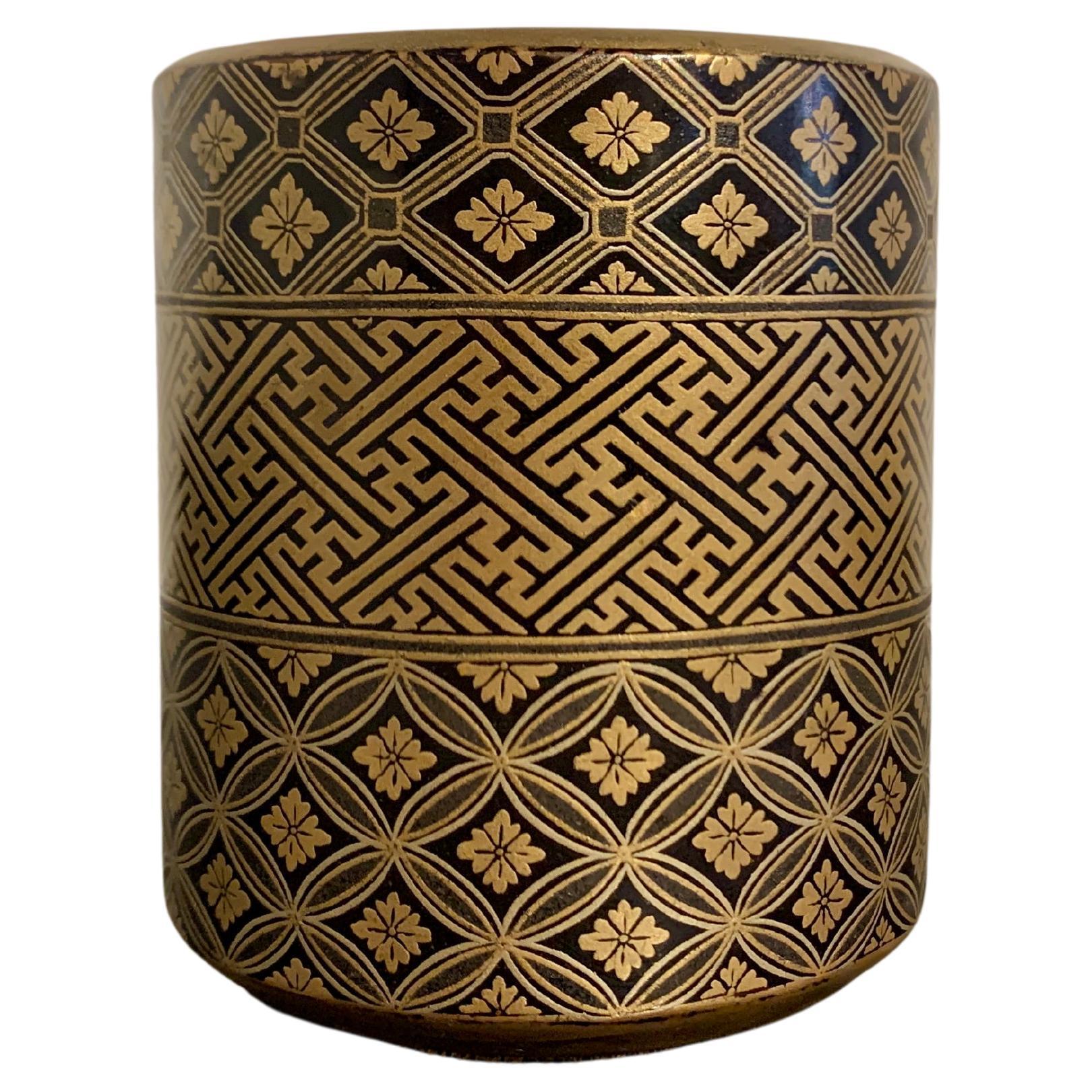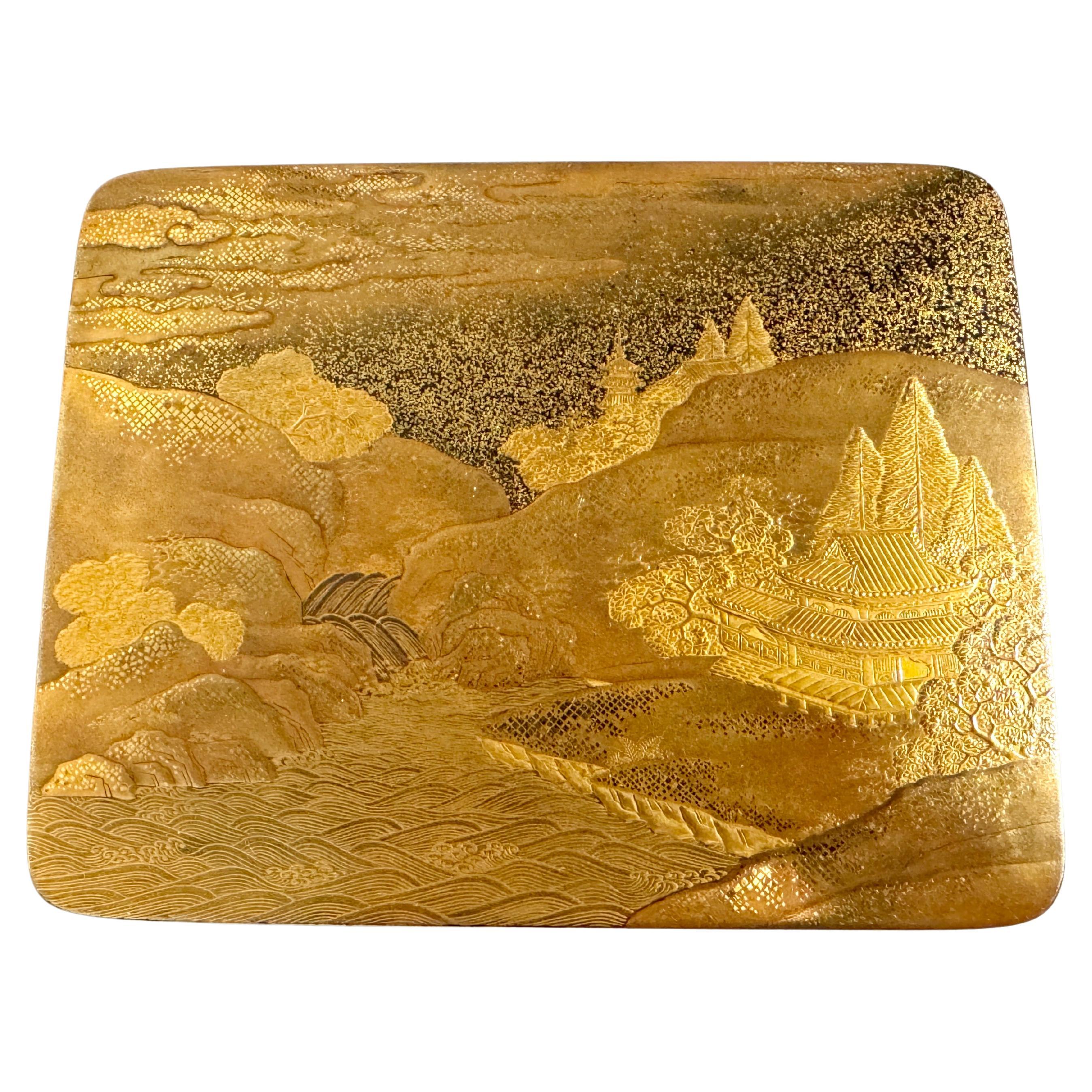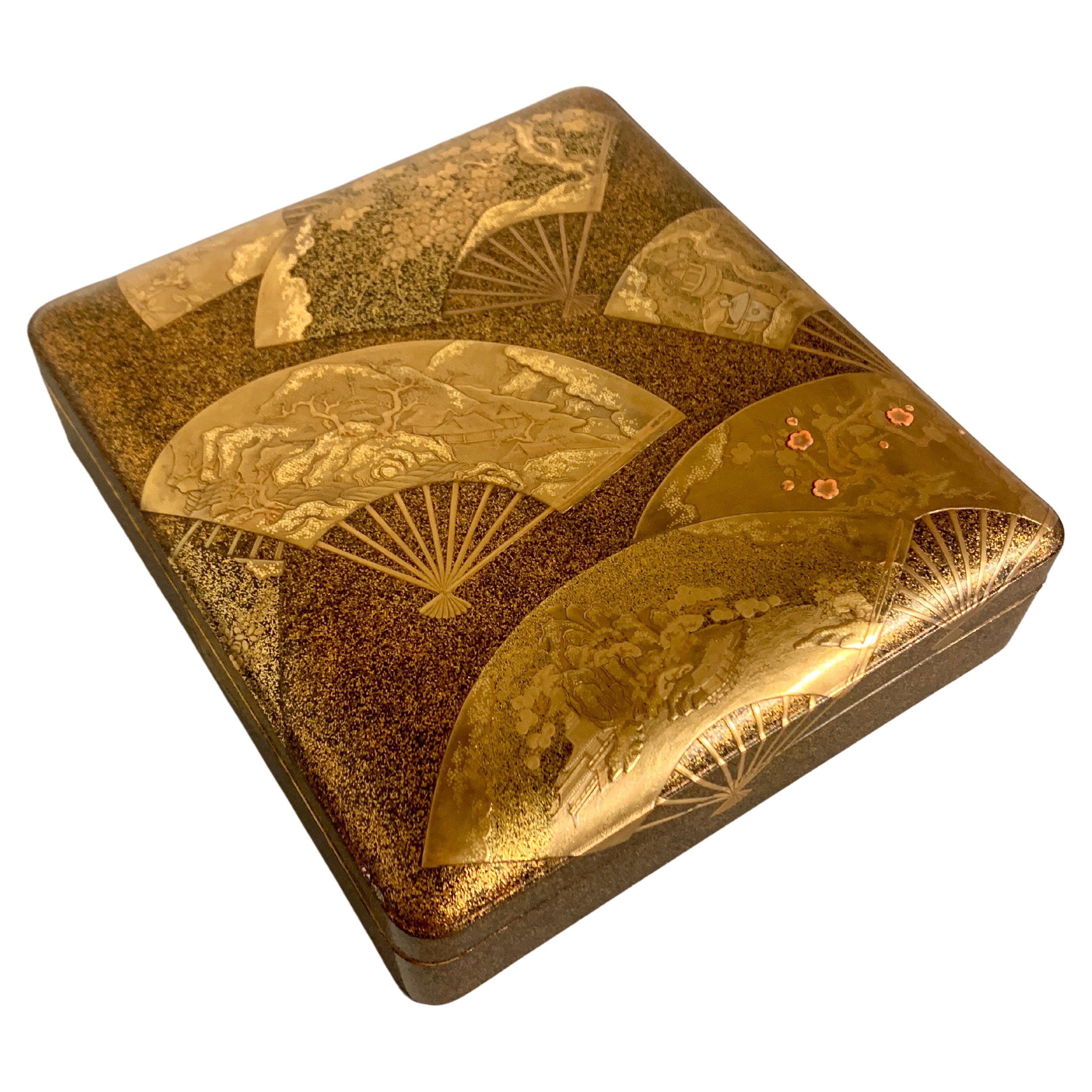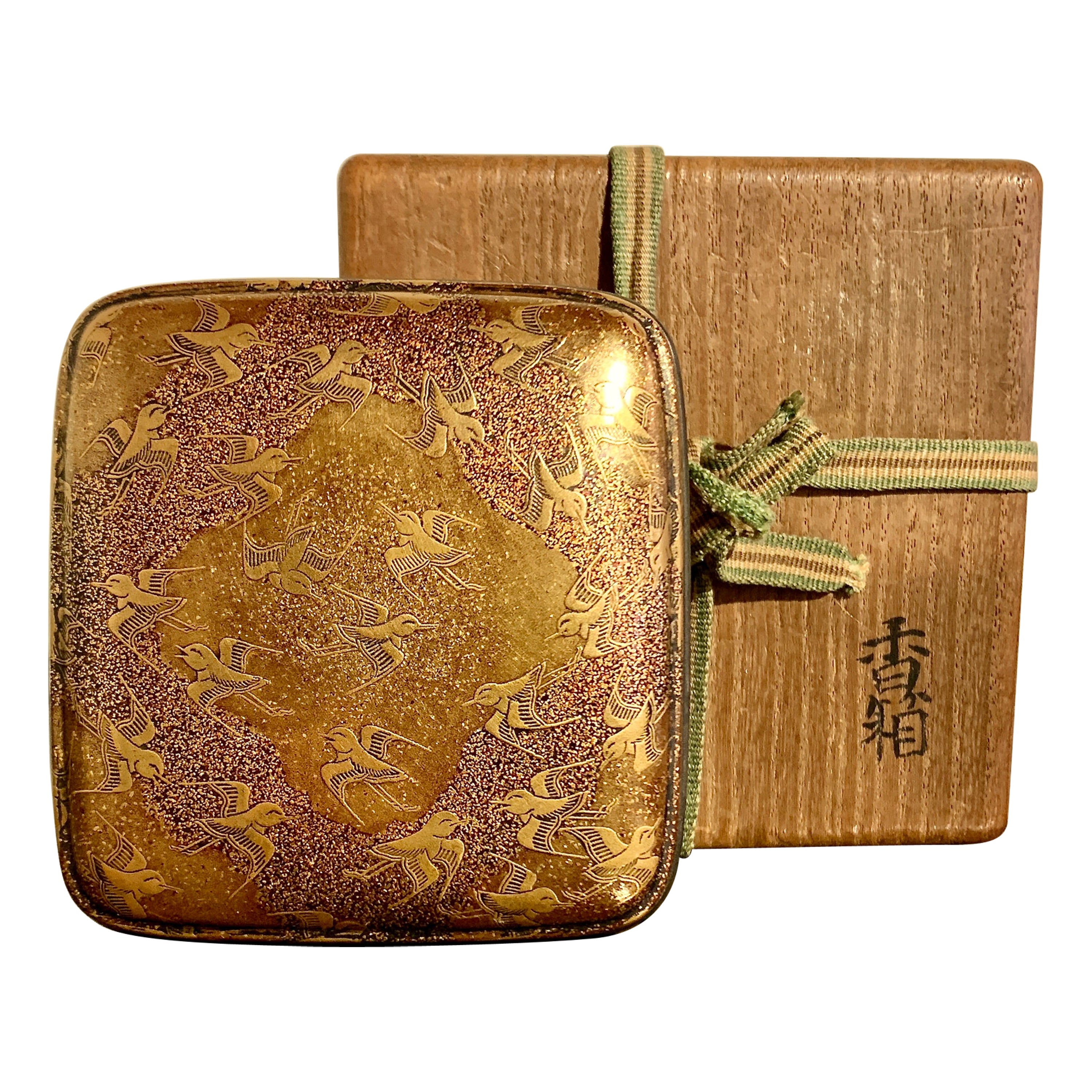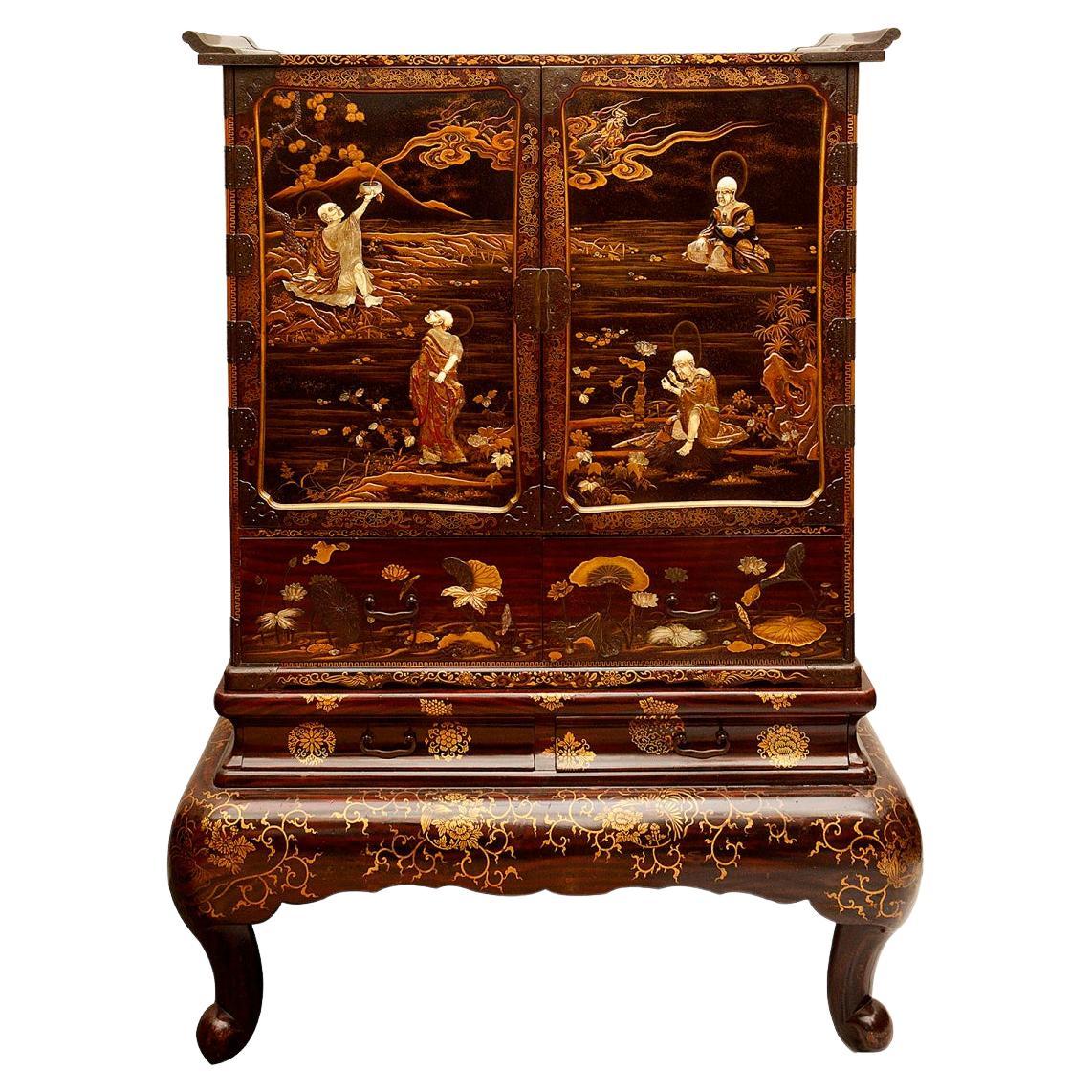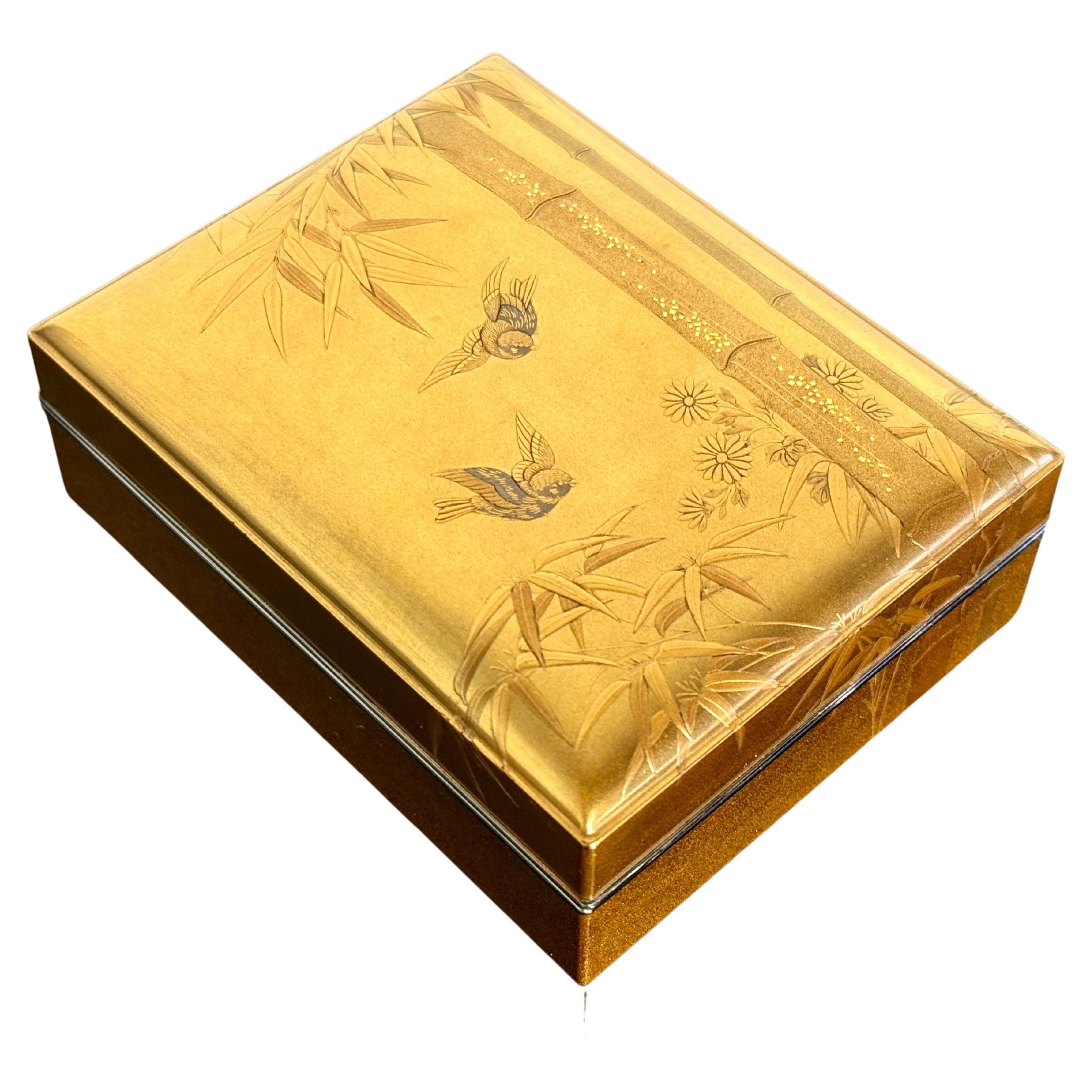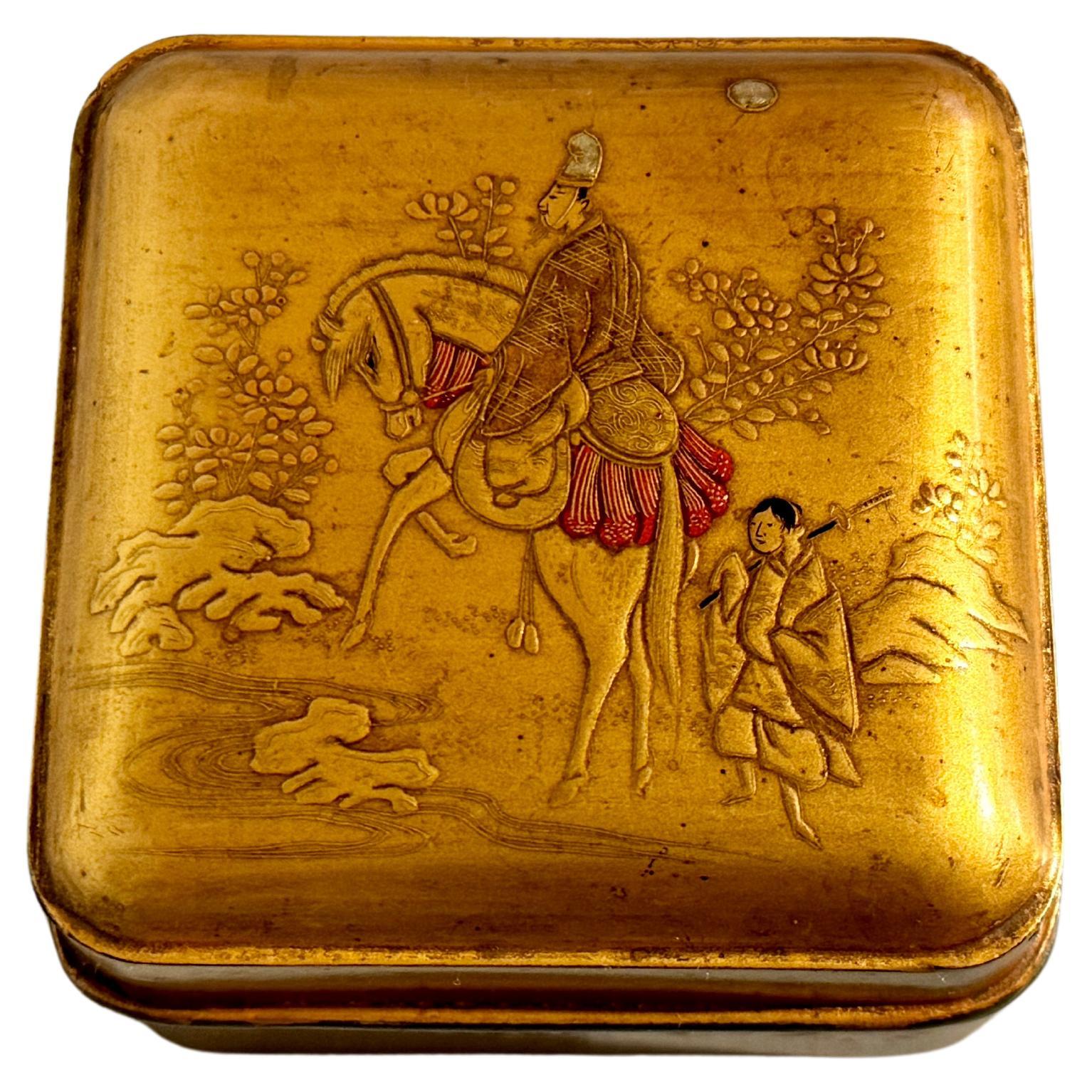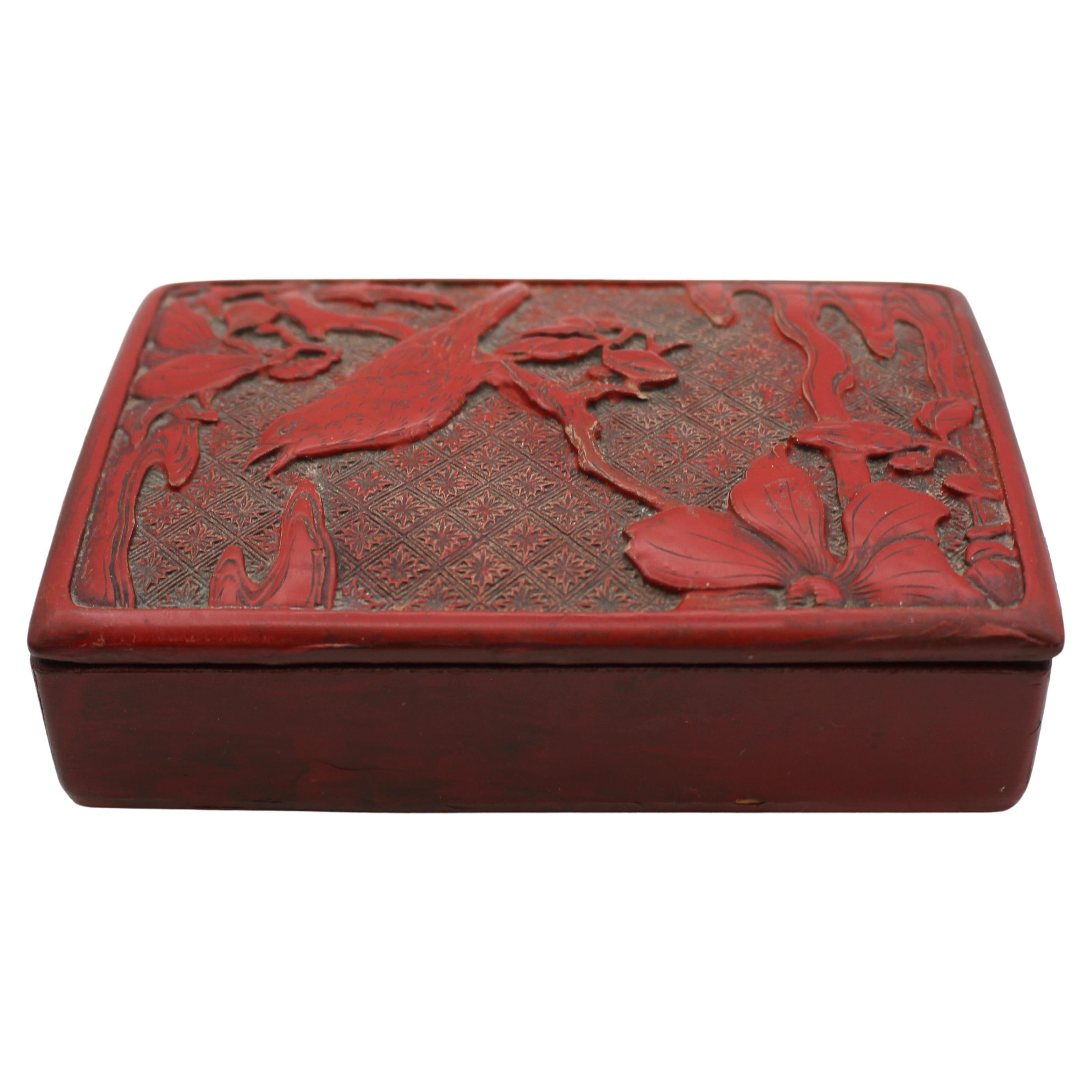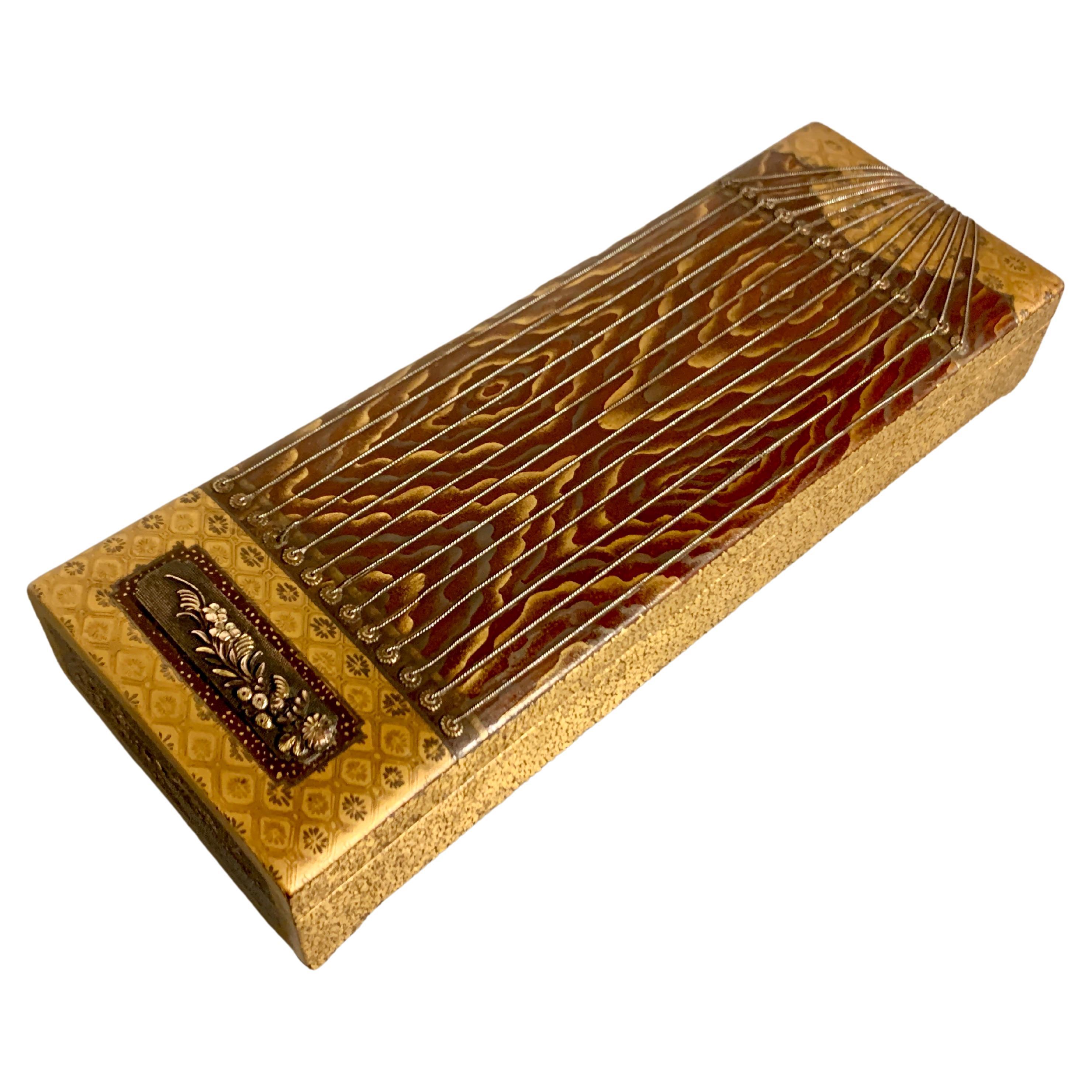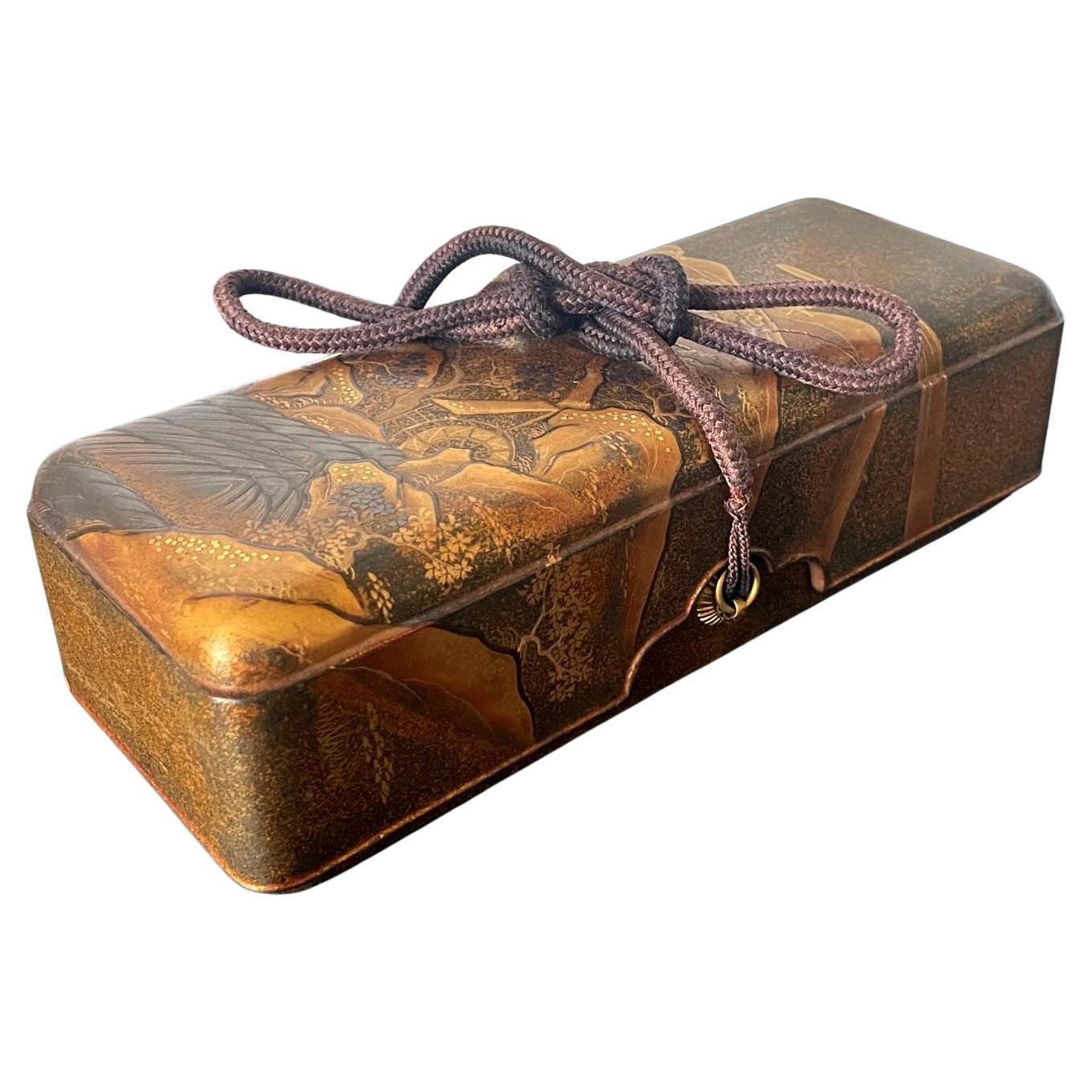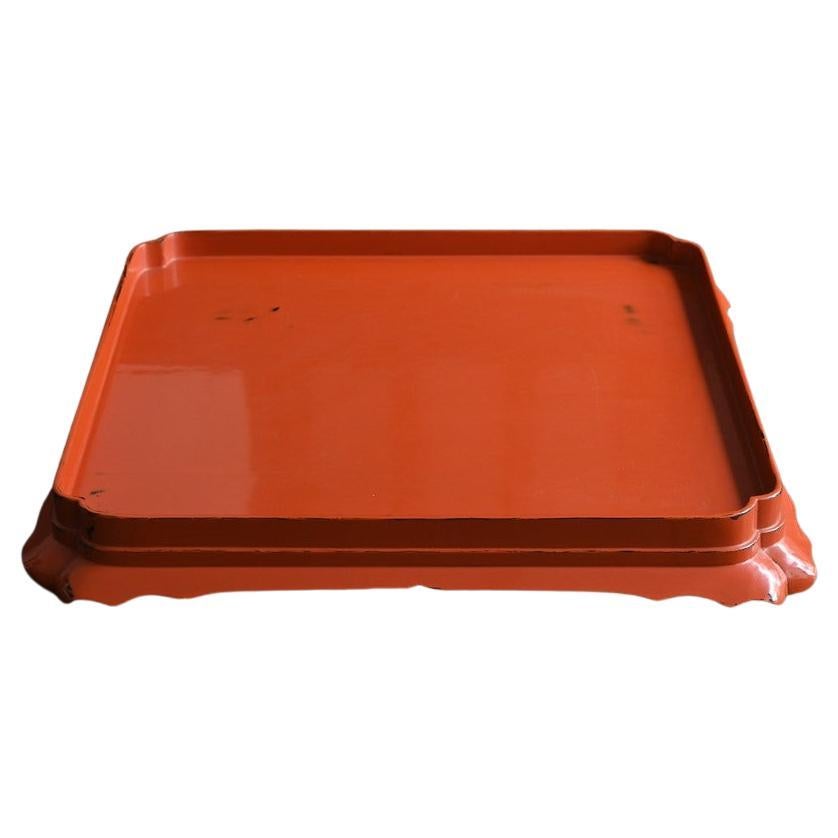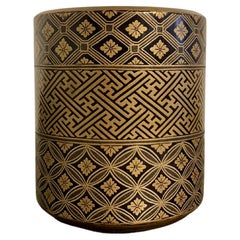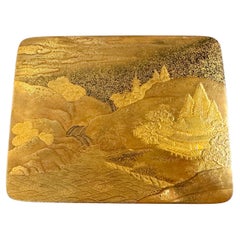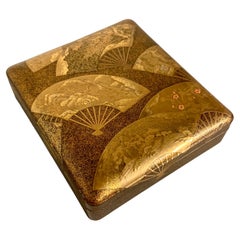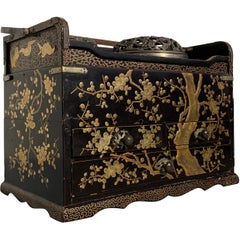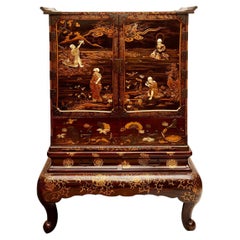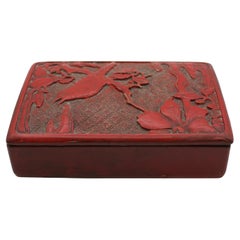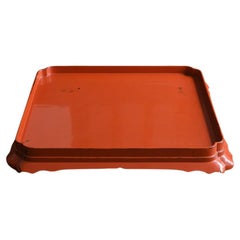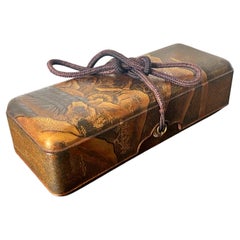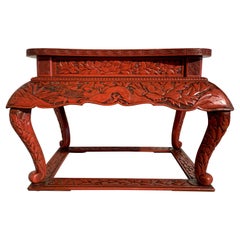
Japanese Kamakura-Bori Red Lacquer Incense Stand, Edo Period, 19th Century
View Similar Items
Want more images or videos?
Request additional images or videos from the seller
1 of 18
Japanese Kamakura-Bori Red Lacquer Incense Stand, Edo Period, 19th Century
Price:$3,760
$4,700List Price
About the Item
- Dimensions:Height: 12.75 in (32.39 cm)Width: 18.75 in (47.63 cm)Depth: 11 in (27.94 cm)
- Style:Edo (Of the Period)
- Materials and Techniques:
- Place of Origin:
- Period:
- Date of Manufacture:circa 1840
- Condition:Repaired: The legs with evidence of glue repairs and retouching. The stretcher reattached to the feet with glue and nails. Additions or alterations made to the original: The underside of the stretcher reinforced at the corners. The underside of the table top possibly reinforced as well. Wear consistent with age and use. Minor losses. Minor structural damages. Minor fading. Minor chips to the edges. The legs with repairs. The stretcher rejoined to the legs. With dirt accumulation to the recesses of the carvings. The underside with a long crack that does not affect the stability or structure.
- Seller Location:Austin, TX
- Reference Number:1stDibs: LU894724143332
About the Seller
5.0
Platinum Seller
Premium sellers with a 4.7+ rating and 24-hour response times
Established in 2001
1stDibs seller since 2010
345 sales on 1stDibs
Authenticity Guarantee
In the unlikely event there’s an issue with an item’s authenticity, contact us within 1 year for a full refund. DetailsMoney-Back Guarantee
If your item is not as described, is damaged in transit, or does not arrive, contact us within 7 days for a full refund. Details24-Hour Cancellation
You have a 24-hour grace period in which to reconsider your purchase, with no questions asked.Vetted Professional Sellers
Our world-class sellers must adhere to strict standards for service and quality, maintaining the integrity of our listings.Price-Match Guarantee
If you find that a seller listed the same item for a lower price elsewhere, we’ll match it.Trusted Global Delivery
Our best-in-class carrier network provides specialized shipping options worldwide, including custom delivery.More From This Seller
View AllJapanese Lacquer Incense Burner, Koro, Edo period, mid 19th century, Japan
Located in Austin, TX
An elegant and refined Japanese lacquer koro, incense burner, in the form of a chaire, tea caddy, Edo Perio, mid 19th century, Japan.
The barrel shaped koro formed as a traditional ...
Category
Antique Mid-19th Century Japanese Edo Lacquer
Materials
Copper
Japanese Lacquer Incense Accessories Box, Kobako, Edo Period, mid 19th c, Japan
Located in Austin, TX
A remarkable Japanese maki-e lacquer box for incense accessories, kobako, with interior fitted tray, kakego, designed with a temple complex scene, late Edo Period, mid 19th century, ...
Category
Antique Mid-19th Century Japanese Edo Lacquer
Materials
Silk, Softwood, Cypress, Lacquer
Japanese Maki-e Lacquer Document Box, Edo Period, early 19th Century, Japan
Located in Austin, TX
A spectacular Japanese maki-e lacquer lidded box, possibly a writing box, suzuribako, decorated with images of folding fans, ogi, Edo Period, earl...
Category
Antique Early 19th Century Japanese Edo Lacquer
Materials
Coral
Japanese Lacquer Smoking Box, Tabako Bon, Edo Period, 19th Century
Located in Austin, TX
A very fine Japanese maki-e lacquer decorated tabako bon, or smoking box, late Edo Period, mid-19th century, Japan.
The elegant smoking box of black lacquer decorated with a wonderful gold lacquer takamaki-e design of a gnarled and elegantly twisted plum tree with branches in full bloom. A border of golden cranes in flight to the top.
The smoking box, called a tabako bon, is comprised of an open section at the top with inset with two cylindrical metal canisters...
Category
Antique Mid-19th Century Japanese Edo Lacquer
Materials
Lacquer
Japanese Lacquer Incense Box, Kogo, Momoyama or Edo Period, 16th/17th Century
Located in Austin, TX
A wonderful Japanese lacquer incense box, kogo, with a design of plovers in flight, late Momoyama or early Edo Period, circa 1600, Japan.
The small box, called a kogo, was used to s...
Category
Antique Early 17th Century Japanese Edo Lacquer
Materials
Gold, Pewter
Japanese Lacquer Kobako, Swallows and Bamboo, Edo Period, mid 19th c, Japan
Located in Austin, TX
A fine and elegant Japanese gilt maki-e lacquer box for incense accessories, kobako, late Edo period, mid 19th century, Japan.
The fantastic small box of rectangular form, with a sl...
Category
Antique Mid-19th Century Japanese Edo Lacquer
Materials
Silver
You May Also Like
Japanese Lacquer Meiji Period Cabinet on Stand, circa 1890
Located in Brighton, Sussex
A exquisite, fine quality Meiji period (1868-1912) Japanese black lacquer cabinet on stand with wonderful scrolling gilded decoration. H...
Category
Antique Late 19th Century Japanese Japonisme Lacquer
Materials
Lacquer
Late 19th Century Japanese Kamakura Carved Lacquer & Wood Box
By The Lacquer Company
Located in Chapel Hill, NC
Late 19th century Japanese Kamakura carved lacquer & wood box. A bird perches in a flowering tree on the top surface. Often mistaken for Chinese carved lacquer. Good overall conditio...
Category
Antique Late 19th Century Japanese Meiji Lacquer
Materials
Wood, Lacquer
A large square tray made of Japanese antique lacquer / Late Edo period/19th
Located in Sammu-shi, Chiba
These trays were made after the late Edo period in Japan (after 1800).
This particular type of tray is known as "Negoro-bon."
Negoro lacquerware is a specific style of Japanese lacqu...
Category
Antique 19th Century Japanese Edo Lacquer
Materials
Lacquer
Japanese Lacquered Maki-e Fubako Edo Period
Located in Atlanta, GA
A Japanese lacquered wood fubako (a box used to store document or small scroll painting), circa second half of 19th century late Edo period. The rectangular box features an unusually deep lipped lid with slightly rounded corners, a conforming lower box that is almost entirely covered by the lid which has two bronze medallion rings with tasseled...
Category
Antique 19th Century Japanese Edo Lacquer
Materials
Wood, Lacquer
Edo Period Makie Lacquer Incense Burner with Bronze Receptor
Located in Fukuoka, JP
A Fine Lacquer Incense Burner with Makie Gold Design.
This fine lacquer incense burner is a stunning example of Japanese craftsmanship. It is dated to the Edo-Meiji period, 19th cen...
Category
Antique 19th Century Japanese Edo Lacquer
Materials
Bronze
Antique Japanese Export Lacquer Bamboo Stick Stand
Located in Brea, CA
Antique Japanese export lacquer and gilt bamboo stick stand, see more pictures, 46'' x 27.5'' x 10''.
Category
Early 20th Century Japanese Meiji Lacquer
Materials
Bamboo
